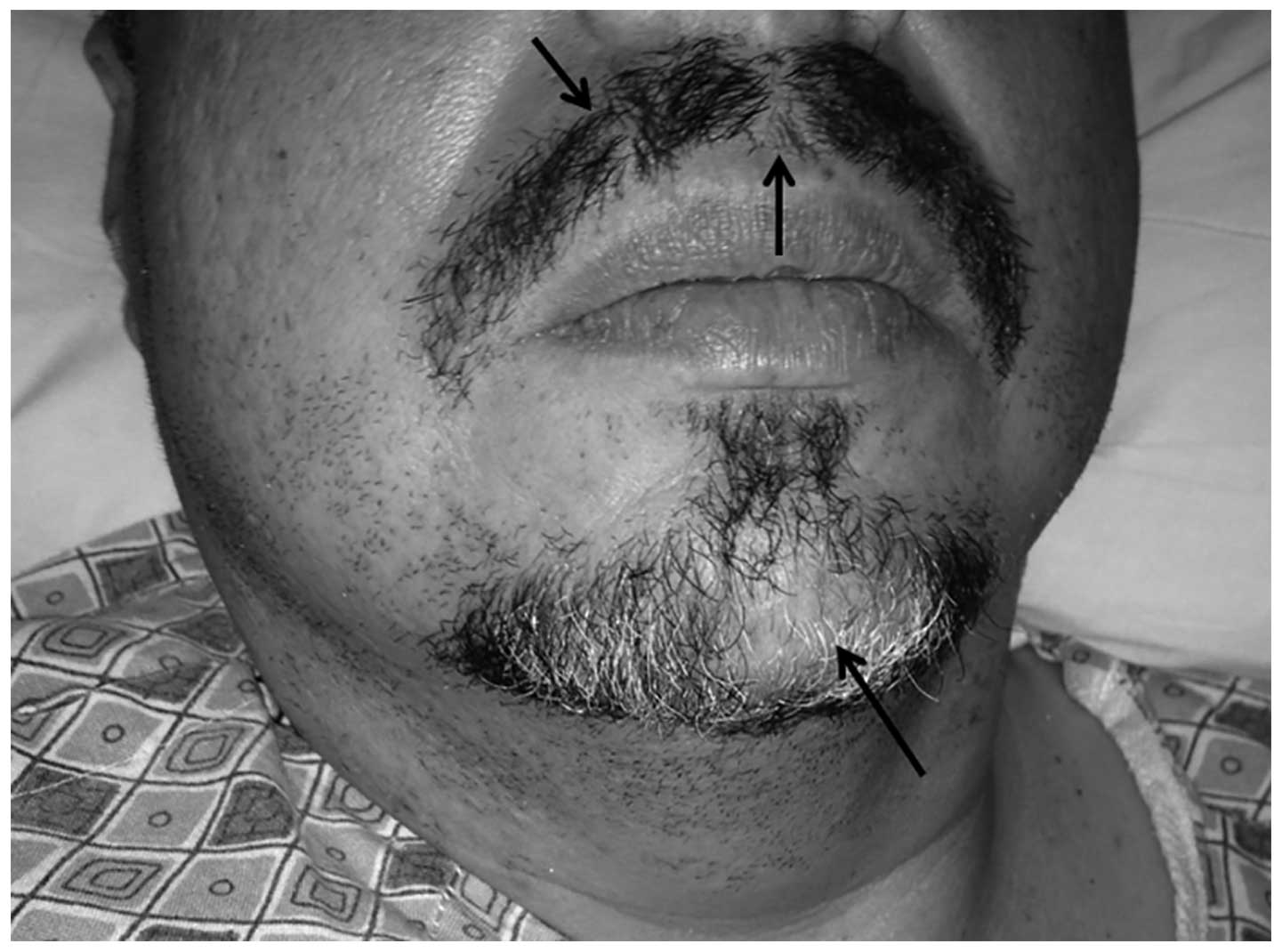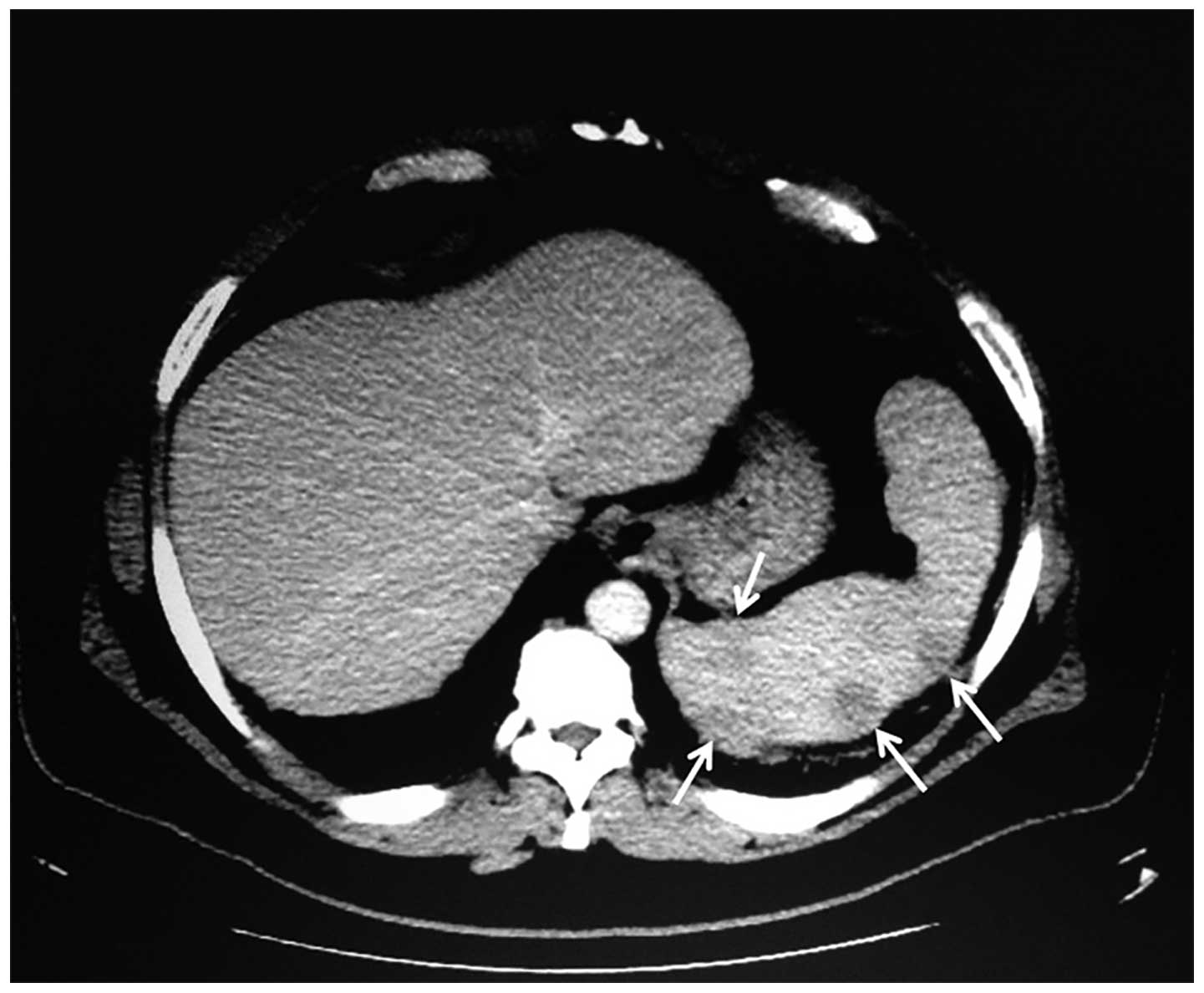Alopecia areata as a paraneoplastic syndrome of Hodgkin's lymphoma: A case report
- Authors:
-
View Affiliations
Affiliations: Department of Internal Medicine, Samuel Oschin Comprehensive Cancer Institute, Cedars-Sinai Medical Center, Los Angeles, CA 90048, USA, Blood and Marrow Transplant Program, Samuel Oschin Comprehensive Cancer Institute, Cedars-Sinai Medical Center, Los Angeles, CA 90048, USA
- Published online on: April 9, 2014 https://doi.org/10.3892/mco.2014.274
-
Pages:
596-598
Metrics:
Total
Views: 0 (Spandidos Publications: | PMC Statistics:
)
Metrics:
Total PDF Downloads: 0 (Spandidos Publications: | PMC Statistics:
)
This article is mentioned in:
Abstract
Alopecia areata (AA) has been classically associated with several autoimmune disorders. However, AA as a paraneoplastic syndrome of Hodgkin's lymphoma (HL) remains a rare entity and our understanding of this phenomenon is limited to a few case reports. This is the case report of a 46‑year‑old male patient who was diagnosed with AA several months prior to the onset of B symptoms and the diagnosis of stage IVB classical HL. The patient was subsequently treated with 6 cycles of adriamycin, bleomycin, vinblastine and dacarbazine and experienced a complete response and resolution of his AA. In our case, the onset of AA preceded the onset of systemic manifestations and diagnosis of HL, whereas in other cases AA was shown to occur concurrently with the clinical manifestations of HL. In all the cases, however, treatment of the HL subsequently led to resolution of the AA. The present case report highlights the significance of AA as a herald of underlying malignancy, although AA in classical HL remains poorly characterized in the literature.
View References
|
1
|
Madani S and Shapiro J: Alopecia areata
update. J Am Acad Dermatol. 42:549–566. 2000. View Article : Google Scholar
|
|
2
|
Bonta MD, Tannous ZS, Demierre M, Gonzalez
E, Harris NL and Duncan LM: Rapidly progressing mycosis fungoides
presenting as follicular mucinosis. J Am Acad Dermatol. 43:635–640.
2000. View Article : Google Scholar : PubMed/NCBI
|
|
3
|
Török L, Gurbity TP, Kirschner Á and
Krenács L: Panniculitis-like T-cell lymphoma clinically manifested
as alopecia. Br J Dermatol. 147:785–788
|
|
4
|
Richmond HM, Lozano A, Jones D and Duvic
M: Primary cutaneous follicle center lymphoma associated with
alopecia areata. Clin Lymphoma Myeloma. 8:121–124. 2008. View Article : Google Scholar : PubMed/NCBI
|
|
5
|
Anderson LA, Gadalla S, Morton LM, et al:
Population-based study of autoimmune conditions and the risk of
specific lymphoid malignancies. Int J Cancer. 125:398–405. 2009.
View Article : Google Scholar : PubMed/NCBI
|
|
6
|
Fox H: Lymphogranulomatosis of the skin in
Hodgkin’s disease. Arch Derm Syphilol. 2:578–593. 1920.
|
|
7
|
Garg S, Mishra S, Tondon R and Tripathi K:
Hodgkin’s lymphoma presenting as alopecia. Int J Trichology.
4:169–171. 2012.
|
|
8
|
Mlczoch L, Attarbaschi A, Dworzak M,
Gadner H and Mann G: Alopecia areata and multifocal bone
involvement in a young adult with Hodgkin’s disease. Leuk Lymphoma.
46:623–627. 2005.PubMed/NCBI
|
|
9
|
Chan PD, Berk MA, Kucuk O and Singh S:
Simultaneously occurring alopecia areata and Hodgkin’s lymphoma:
complete remission of both diseases with MOPP/ABV chemotherapy. Med
Pediatr Oncol. 20:345–348. 1992.PubMed/NCBI
|
|
10
|
Mani H and Jaffe ES: Hodgkin lymphoma: an
update on its biology with newer insights into classification. Clin
Lymphoma Myeloma. 9:206–216. 2009. View Article : Google Scholar : PubMed/NCBI
|











